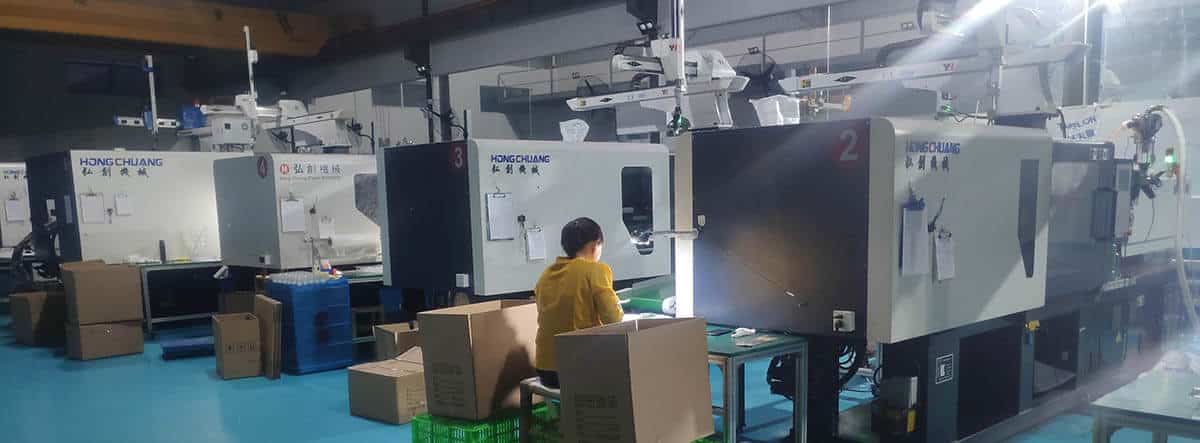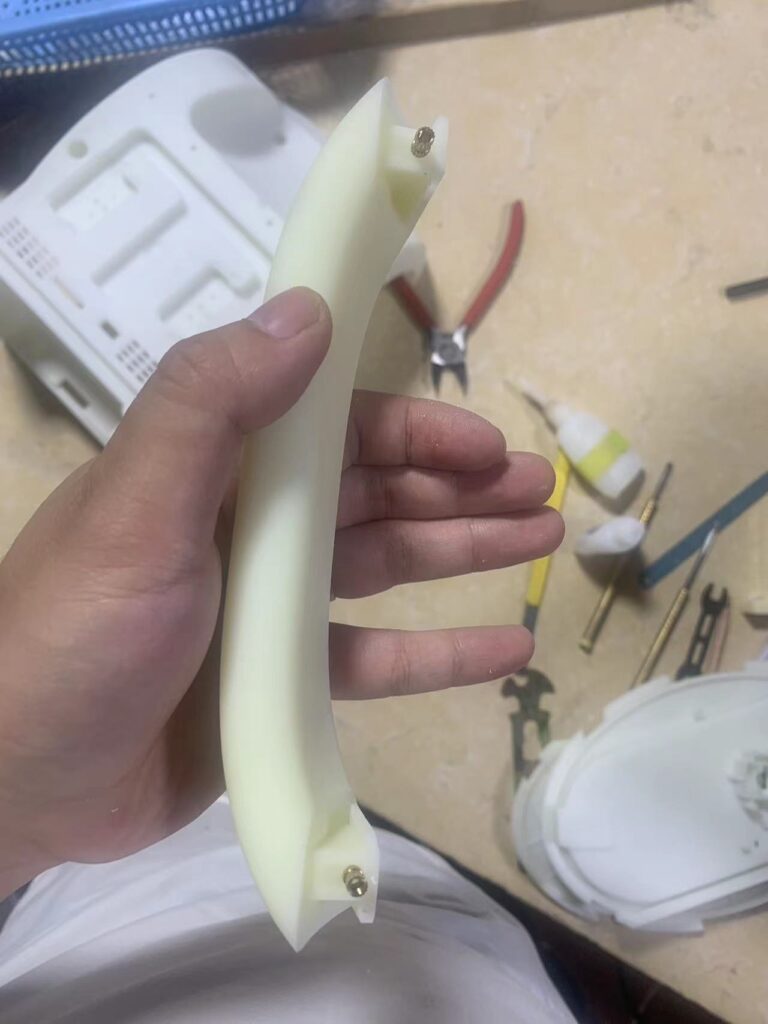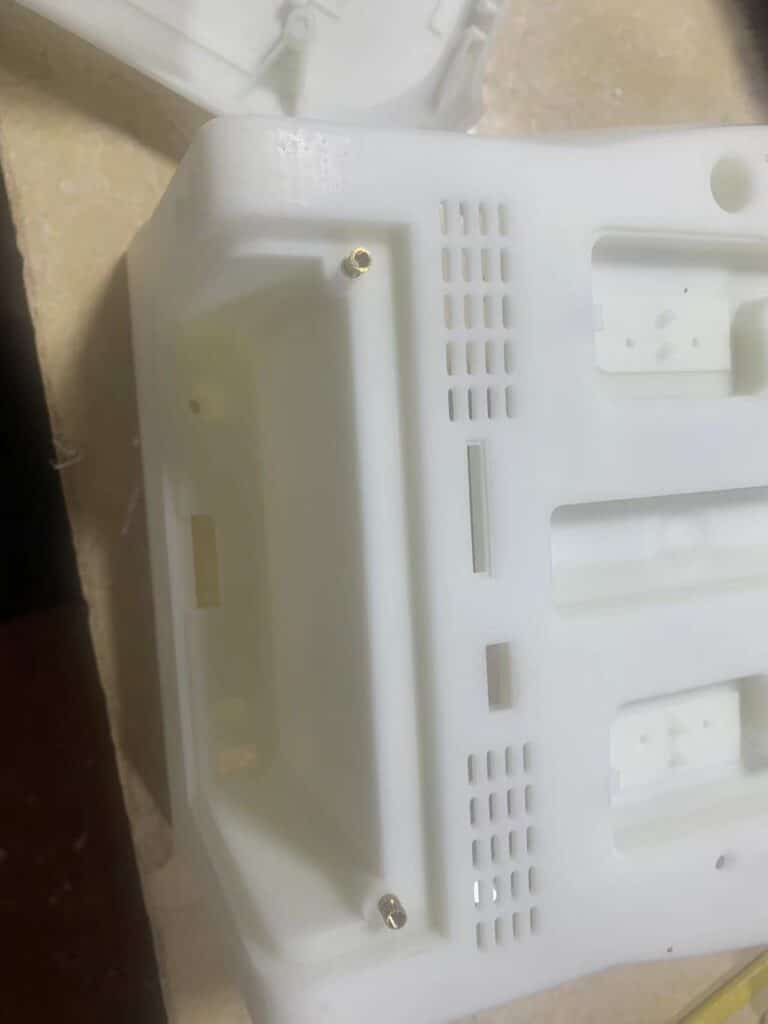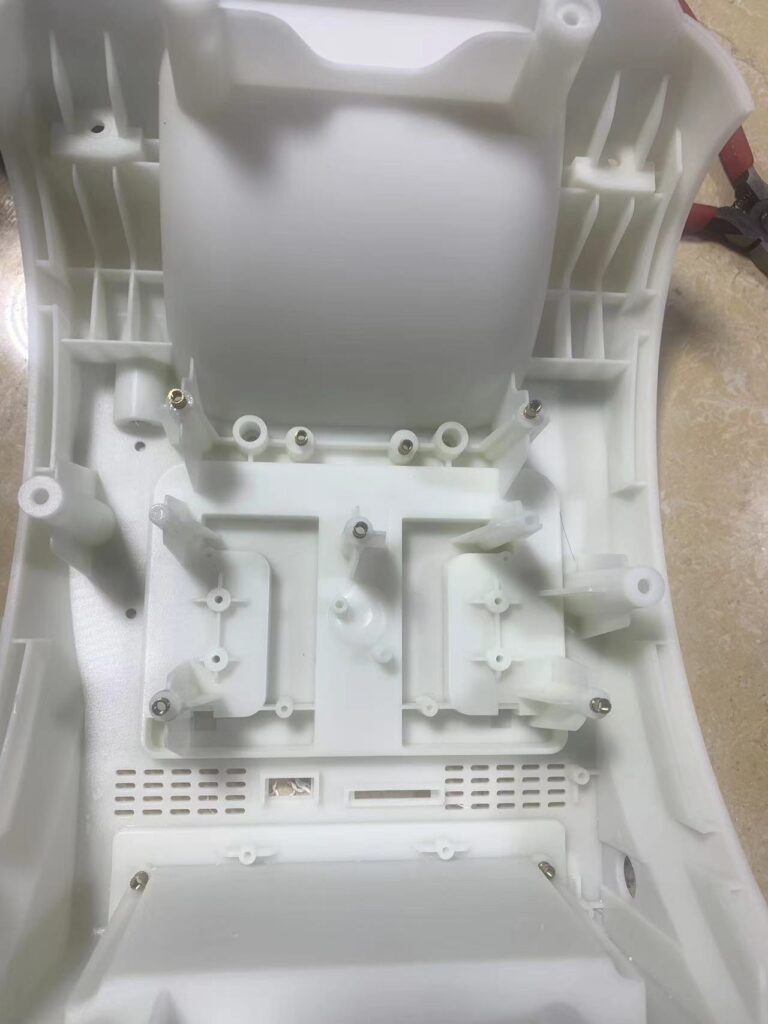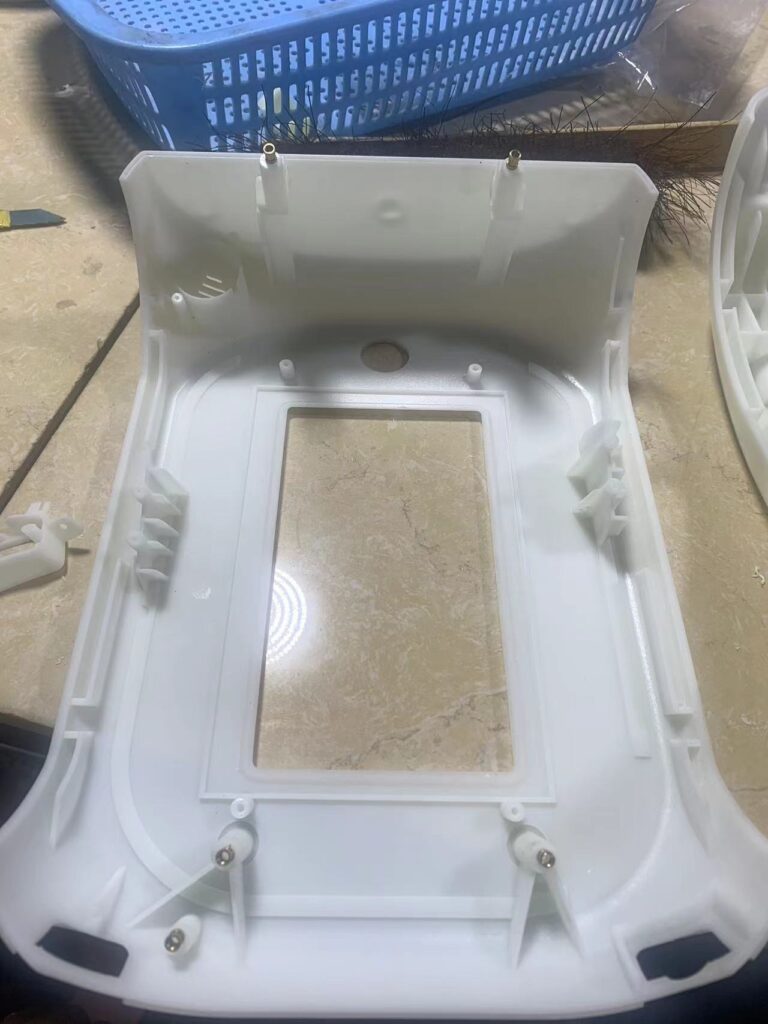China 3D printing and Vacuum casting company
Got a brilliant product concept, but short on cash or 3D printing and vacuum casting gear?
Don’t sweat it, we’re here for ya. Topworks delivers first-rate 3D printing and vacuum casting services to folk globally.
We’re your go-to China-based company specializing in small-scale 3D printing and vacuum casting projects. Our selling point? nifty turnaround times, precise tolerances, and wallet-friendly rates.
We serve up a smorgasbord of offerings: speedy prototypes, 3D prints, vacuum casting – even mould-making. Whether you need ABS, PA, PC/ABS, PP or PEI-based components (or others!), we’ve got ’em all. Plus, we toss in bespoke colours and finishes to tick off all your boxes.
We rub shoulders with clients from the world over- be it Europe, America, Asia or Australia. We pledge to whip up top-drawer products at economical prices swiftly so you get back to the grind pronto. We’re an avid pack of engineers, designers and business buffs who are stoked about what lies ahead. And trust us mate, it’s gonna be big!
finished vacuum casting model
final assembly
finished vacuum casting
Benefits Of China Vacuum Casting And How It Affects The Process
It isn’t like other primary molding processes you’ve heard about. In fact, vacuum casting is the third most cost-effective way to manufacture complex designs. It’s an alternative that many companies are turning to, especially in these tough economic times. If you’re looking to cast thinner plastics or even metals, or if your budget is getting a little tight and you want to save a few bucks, vacuum casting may be right for you.
Low-Volume Manufacturing
It can be used when low volumes or high tolerances are needed ,while other way needs high cost. In addition to prototypes and custom products, it is commonly used when large quantities of parts aren’t necessary. Hence, it is ideal for making prototypes and jewelry in small batches to test the market before mass production begins.
Quick Manufacture And Delivery
Despite the fact that vacuum casting offers quick manufacturing and delivery of products, industries all over the world prefer it. You get the product on time for your customers who need it urgently, and since molds do not need to be made, this also saves time for a new deveoped item hit the market.
Unlike other types of metal casting processes, vacuum casting produces parts much faster. The time taken for each cast varies based on the complexity, but usually ranges from a few days to a week.
A Cheaper Alternative To Injection Molding
This material has no special requirements compared to steel or aluminum,those 2 material need machining so its time is longer.
It’s used to create prototypes, molds, as well as molds for casting in epoxy, plaster, and concrete because silicone is less expensive than other materials. It reduces the overall cost of production,normally 30% .
The program can also be used to create large and complex prototypes easily.
No Need For Production-Grade Tooling
In comparison to other casting methods, vacuum casting requires no tooling, which means it is a great option for businesses that do not wish to invest in expensive molds and tooling.
Vacuum casting molds are simpler than steel plastic injection molds or die casting molds, Consequently,it makes them better for prototyping because they can be made quickly and cheaply.
Better Product Quality
With vacuum casting, the product quality is better due to less porosity, better surface finish, and better dimensional accuracy. Also, shrinkage and warping are minimized during curing.
This makes vacuum casting ideal for industries requiring high-quality components, such as medical devices and aerospace. A vacuum casting process produces parts with fewer defects and cleaner parting lines than other types of casting processes.
Vacuum Casting Process:
In order to control the quality and rate at which a product is formed, and reduce labor costs, manufacturers are using vacuum casting process using molds or dies.
Step One: Establish the Model Pattern
Your first task in developing casting components must be creating a model pattern to serve as mold reference and shape of their final cast components. CNC machining or 3D printing techniques may be utilized as prototyping solutions; every feature of product design, such as dimensions, shapes and surface characteristics must accurately represented within this pattern.
Material selection for models typically includes metals, plastics, wood, wax and epoxy resins. Selection depends upon requirements for machinability, heat resilience and dimensional stability – such as Aluminum’s excellent surface quality which lends itself to easy machining; on the other hand ABS plastic offers more affordable material changes as needed.
Be certain that every effort is put forth when creating the model pattern for casting components, with precision of +-0.005 inches required for accurate results. This ensures that cast parts meet design specs precisely; text, logos or fillets may also be added into this pattern design for additional appeal; draft angles may need to be included to facilitate demolding processes more smoothly.
Faultless model pattern construction is crucial in order to prevent imperfections from creeping into final production elements, including irregular surfaces, warping, air bubbles, or ejector pin marks. Thus, expert planning must accompany both designing and manufacturing these patterns.
Step Two of Three : Construct a Silicone Mold
After creating an accurate master pattern, the next step in developing the mold should be creating the silicone rubber mold. Once suspended in a mold frame and liquid silicone is poured around it, flowing freely along every contour before being cured through catalyst into an extremely flexible rubber mold.
Silicone is ideal for replicating intricate details and complex geometries with precise accuracy down to an accuracy of 0.005 inches or less, providing easy part release after curing and long mold life across many casting cycles. Mold makers rely on high performance silicones with excellent chemical and heat resistance as the ideal material choice, which allow mold makers to replicate complex mold designs more reliably than with any other medium.
There are two primary mold designs used for vacuum casting:
- Single-piece mold – An individual piece mold with one cavity and pouring cup that’s suitable for simple part geometries such as symmetricals.
- Multi-piece mold – Comprising multiple pieces that enable flexible demolding after curing has taken place; these moulds must be assembled after being cured before use.
Mold releasing agents must first be applied to a master pattern before pouring silicone onto it, in order to stop any sticking and allow clean demolding. Vents and ejector pins may also be included within the mold design, while pouring cups must be engineered so as to minimize turbulent resin flow.
Establishing an outstanding silicone mold requires considerable skill in vacuum casting processes. Mold construction directly impacts accuracy, surface finish quality and consistency of final products.
Step Three of Casting Process : Prep for Casting
Prior to beginning production, the finished silicone mold must first be mounted and sealed within a vacuum casting machine chamber. Next, liquid polyurethane resin components are mixed according to specifications before operators monitor to ensure proper mix ratio that affects cure time and material properties.
Degassing of the resin vessel must then occur under vacuum to eliminate air bubbles that might get trapped within cast parts and have an adverse impact on mechanical performance and cosmetic appearance. Degassing may take anywhere between 5-20 minutes depending on its viscosity.
Step Four : Vacuum Casting Cycle
Once your mold and resin have been assembled, the chamber is closed off and automated casting begins. Key stages include:
Preheating of mold between 150-182degF will accelerate curing. Once heated, resin should be poured directly into mold cavities and overflow cups to quickly fill any fine details in advance of cure.
Vacuum pressure of 29 inches of mercury should be applied for 60 to 90 seconds in order to drive out air bubbles in the resin and ensure void-free casting. After removal of this vacuum pressure, part solidifies in mold as resin cures; curing times typically range between two and ten minutes.
After adequate curing, the part is demolded and finished. For outstanding surface quality and mechanical properties, controlled vacuum pressure must be used to pull liquid resin evenly throughout all crevices of silicone molds – this guarantees exceptional surface quality, accuracy and mechanical properties. Heated tooling speeds resin curing speeding productivity even further.
Vacuum Casting poses many unique challenges and limitations that must be considered, including material constraints and operational difficulties. Here we explore these considerations as part of Vacuum Casting 101.
Though vacuum casting offers several benefits, there are certain hurdles and restrictions associated with its implementation that must be considered before taking this route:
Part Size Limitations
Vacuum chamber dimensions dictate the maximum part size. Commercial machines usually accept parts up to around 60″x20″x20″, though custom systems can handle much larger dimensions. Also, larger parts require higher capacity vacuum pumps in order to achieve desired pressures.
Mold Durability
Although silicone molds tend to last through hundreds of cycles without wearing out and needing replacing, eventually their delicate details start deteriorating over time and they must be upgraded or replaced altogether. Utilizing higher performance silicones may extend longevity but at an added cost.
Vacuum casting parts require additional finishing work like sanding, drilling, tapping or bonding for finishing purposes. Furthermore, mold release agents may also be needed when dealing with minimal draft angles on vertical surfaces. Although secondary operations are an integral component of casting processes in general, vacuum casting often necessitates additional time and cost than net shape methods.
Vacuum Casting of polyurethanes offers unique properties compared to other processes; however, their range is more restricted compared to others. High temperature engineering thermoplastics like PEEK cannot be vacuum cast due to this process’s limited material selection; similarly highly filled or specialty materials requiring high shear/pressure may not be suitable either.
Process Expertise
There’s an art to creating precision master patterns, high fidelity silicone molds, degassing resins properly, and dialing in process parameters correctly when initiating vacuum casting operations. A trial-and-error period often occurs at first – significant process expertise should generally be fostered in-house before beginning vacuum casting operations.
Engineers need to keep these limitations in mind in order to choose an optimum manufacturing technology, like vacuum casting. While no manufacturing method can meet every application perfectly, keeping these restrictions in mind helps engineers select appropriate technologies – in many instances vacuum casting remains highly competitive and effective precision manufacturing method for certain purposes.
Comparison Between Casting Methods
To gain the fullest picture, it can be helpful to compare vacuum casting against popular alternative casting methods:
Die Casting is well suited to producing complex metal parts at very high volumes in short cycle times with excellent dimensional consistency and fast cycles, yet tooling costs for steel dies can be prohibitively high; alternatively vacuum casting may provide greater prototyping potential when prototyping, preproduction volumes or short run production is involved.
Sand Casting provides an economical tooling option for casting metals and alloys; however, its accuracy and surface finish do not compare favorably with that of vacuum casting plastics and urethanes. Sand molds also tend to last less than their reusable silicone counterparts.
Injection Molding
Injection molding offers exceptional efficiency and precision when manufacturing polymer part runs at large scale, yet steel tooling requirements can be expensive and lead times long. Vacuum casting provides an alternative method when dealing with low volumes where injection molding simply cannot justify itself due to steel tooling costs and long lead times.
Resin Transfer Molding (RTM) technology was invented and refined during World War I to produce durable parts at affordable cost.
RTM employs closed molds similar to vacuum casting but injects resin under pressure without vacuum. RTM has become widely popular as an approach for making high performance composites but lacks the precision and surface finish offered by vacuum cast plastics. Furthermore, RTM relies on more expensive metal or composite molds instead of silicone molds for injection molding applications.
Rotational Molding
For rotational molding, powdered polymers are heated against hot mold surfaces before being melted together by rotation. This method makes possible very large hollow part geometries unattainable via vacuum casting; however it lacks precision and should only be considered when creating complex solid parts that would typically require vacuum casting instead.
3D Printing mes 3D printing offers unparalleled geometric freedom and part complexity through an additive process with no tooling requirements, but its surface finish, precision, and end use material properties typically fall below those offered by vacuum cast parts – therefore 3D printing and vacuum casting should be seen as complementary rapid prototyping technologies.
Centrifugal Casting involves dispensing liquid metal evenly into an ever-spinning permanent mold using centrifugal force, with casting weights reaching 10,000 lbs – surpassing even vacuum casting’s capabilities! However, for high precision plastic parts vacuum casting offers superior accuracy, detail, and surface finish over centrifugal methods.
Overall, vacuum casting offers an optimal combination of initial tooling costs, material selection options, part sizes available to be produced in production runs of various lengths, precision production runs sizes and surface quality – making it an attractive and cost-effective alternative for applications aligning with its capabilities.
